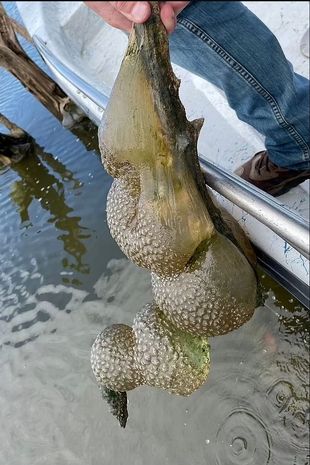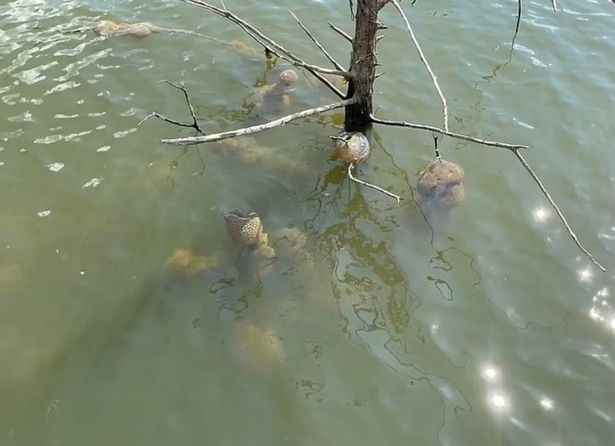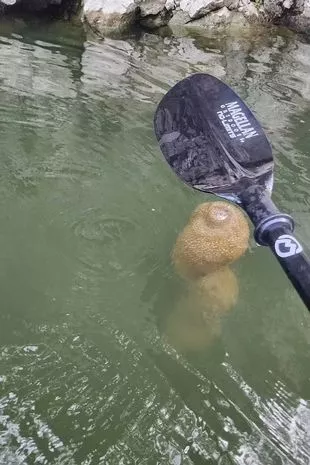
Oklahomans discovered an enigmatic hard sac-like “egg” hanging from the lakeside tree roots. Scientists are now reassuring the locals—who had previously leapt to speculations of extraterrestrial proportions—by describing the object as an ancient species.

These animals are probably going to be around a lot this summer because they have found the ideal habitat.
When enormous, hard-surfaced sacs resembling jellyfish were found hanging from tree roots in Oklahoma, locals assumed the answer must be alien. or not good news, anyhow.
However, scientists have reassured the public by saying that the area’s residents were treated to a unique treat: a view of an extinct animal’s reproductive system that predates the dinosaurs.

Locals posted it online right away, and onlookers started making comments about how alien-looking the eggs appeared. However, biologists claim that the organisms were merely bryozoans. They predate the first dinosaurs to inhabit the earth by hundreds of millions of years. It’s possible that the animals are beneficial to the lake.
The public was informed by officials that the animals are definitely meant to be there.
In order to clean the lake by removing microscopic particles for sustenance, bryozoans clone themselves into enormous masses. These creatures usually live in lakes and ponds. This time, it was discovered in McGee Creek Reservoir, which is situated near the Ouachita Mountain Range’s southwest border.
Clumps of bryozoans are neither an egg nor a single animal. Together, hundreds of different organisms produce this thick shell. Each of the pods, or zooids, is only a few micrometers long. Despite not having a circulatory or respiratory system, the animal can react to stimuli thanks to its central nerve ganglia.
These pods, which are suspended from tree roots, really aid in lake purification.
The microscopic invertebrates may self-replicate and spread through cell clumps on the organism known as statoblasts since they have both male and female reproductive organs.
Statoblasts are capable of asexual reproduction. They accomplish this by severing from a colony, which enables the animal to procreate quickly in appropriate environments. The animals consume bacteria and phytoplankton that are hidden in water.
Sign up for the Mirror’s SMS news service to receive the most important breaking news sent directly to your phone. To subscribe, click this link.
They might have descended from an ancient marine worm, according to fossil records. Their progenitors go back 470 million years; they are ancient bryozoans. Dinosaurs evolved about 245 million years ago, to put things in context.
The photographs were posted on social media by the Oklahoma Department of Wildlife Conservation (ODWC). “What’s that about? The post starts, “You might notice these weird jelly-like balls dangling from submerged tree limbs if you’re out boating somewhere like McGee Creek Reservoir.
These are bryozoans, and this summer you’ll probably see a lot of them. These germs are harmless to both humans and wildlife, so don’t be worried. Actually, they are a sign of clean water and a healthy ecosystem!
Captivating For You




